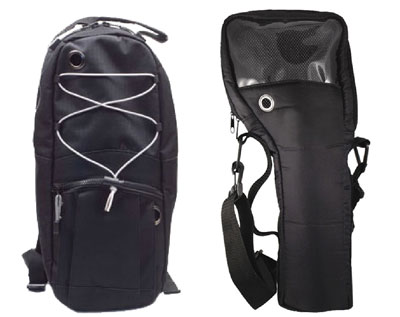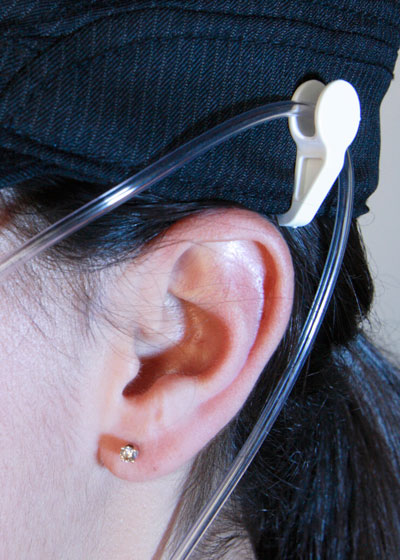Presently there are 15 million patients in the U.S. with some form of chronic obstructive pulmonary disease (COPD) or cardiac deficiency. Of those it is estimated well over four million are on prescribed oxygen therapy. Some only require extra oxygen upon exertion or during sleep, while others may require continuous supplemental oxygen. Regardless, an oxygen solution is always determined and prescribed by the physician. However, it is the HME/DME provider who is responsible for educating and guiding each patient through their new system. For providers, oxygen therapy is a balance between reimbursement and responsibility. They must walk a fine line to maintain a business’s profitability, find new opportunities and, most importantly, satisfy the needs of patients.
In order to best serve the patient, first determine their needs by evaluating their lifestyle and daily routine. Take the time to sit with the patient or caregiver and discuss daily activities and routines. Is the patient active? Does he or she travel frequently or just walk the dog around the block occasionally? Making sure a COPD patient understands that being on oxygen therapy does not mean a future of BarcaLoungers and daytime television is as important to their well-being as is their adherence to their new oxygen system.
There are not just two categories of oxygen patients, however, and one size does not fit all active patients any more than it would fit all homebound patients. For example, portable oxygen concentrators (POCs) have continually gained popularity. The investment of putting them into each patient’s home might be tempting, but is it necessary? Perhaps providing portable oxygen cylinders may meet their needs just as well. To that end many HME providers have developed areas within their stores where patients can view, read and learn about a variety of equipment and accessories in a hands-on setting before having items delivered to their homes. Some HME companies, such as Fitzsimmons in Chicago, have the space for a showroom with well-organized products so they can be easily viewed and tested by the customer. Oxygen patients may come in to pick up their cylinders but end up purchasing aids to enhance their daily living. Because cylinder protocol and safety precautions are often reviewed in these settings, this would be the perfect opportunity for a hands-on trial of portable cylinders in several different sizes. A cylinder bag display with various accompanying cylinders gives users the chance to view different styles in use and experience whether a tote-bag style or shoulder-bag design might be more comfortable.
 AG Industries, for example, supplies a variety of oxygen carrying bags, all of which are durably made with convenient and comfortable straps. The popular backpack cylinder bag has the added benefit of nonslip shoulder pads that allow hands-free convenience for shopping and other activities and zipped pockets for accessories. During this assessment process however, you may instead discover with your patient that wheelchair bags, a style that fits over the back of the chair and comes with snap pockets, are the necessity.
AG Industries, for example, supplies a variety of oxygen carrying bags, all of which are durably made with convenient and comfortable straps. The popular backpack cylinder bag has the added benefit of nonslip shoulder pads that allow hands-free convenience for shopping and other activities and zipped pockets for accessories. During this assessment process however, you may instead discover with your patient that wheelchair bags, a style that fits over the back of the chair and comes with snap pockets, are the necessity.
Portable oxygen options include more than bags. A slightly less active oxygen user might appreciate an option such as an oxygen cart. Just as portable cylinders have evolved from heavy metals to lightweight aluminum, so have the oxygen carts that carry them, which means individuals aren’t limited to slowly ambling about while weighed down by their cylinder.
Just pairing patients with the right products isn’t the end of the line. Generally, when oxygen equipment is first delivered to a patient they are instructed on use of the concentrator, portable cylinder and possibly nebulizer or suction unit, as well as any additional equipment. Even though the guidelines that accompany these deliveries are thorough, sometimes comprehending and retaining so much new information at once is difficult for the end user. These days most companies leave written instructions on use of equipment and have their patients sign off, to reflect their understanding. Instead, providers might consider slowing down the instructional period into several smaller, easier to digest sessions, beginning with patients simply acclimating to their oxygen concentrator.
 In the interest of providing the best care for patients as well as finding new opportunities for the business, HME providers may want to spend one final session with patients introducing the many accessories available. Some patients now prefer a lightweight plastic wrench or an oxygen hand wheel to open and close their cylinders that won’t weigh down their bags. If, over time, patients begin to experience pain from the cannula, they might be interested in a product like O2 Ear Buddies, a small plastic clip that secures the cannula onto a headband or hat to prevent ear soreness. Over-the-counter Cann-Ease is a nasal moisturizing cream also used to reduce soreness, lessen redness and prevent irritation around the nares. Easily portable and mess-free disinfectant wipes are used widely with care of cannulas, which should be wiped clean daily. A wide variety of products have come to market focused on relieving side effects and enhancing comfort to oxygen users, so the opportunities for accessories sales go on and on. Offering these little extras is not a huge investment, but could mean improved quality of life for a patient.
In the interest of providing the best care for patients as well as finding new opportunities for the business, HME providers may want to spend one final session with patients introducing the many accessories available. Some patients now prefer a lightweight plastic wrench or an oxygen hand wheel to open and close their cylinders that won’t weigh down their bags. If, over time, patients begin to experience pain from the cannula, they might be interested in a product like O2 Ear Buddies, a small plastic clip that secures the cannula onto a headband or hat to prevent ear soreness. Over-the-counter Cann-Ease is a nasal moisturizing cream also used to reduce soreness, lessen redness and prevent irritation around the nares. Easily portable and mess-free disinfectant wipes are used widely with care of cannulas, which should be wiped clean daily. A wide variety of products have come to market focused on relieving side effects and enhancing comfort to oxygen users, so the opportunities for accessories sales go on and on. Offering these little extras is not a huge investment, but could mean improved quality of life for a patient.
The absolute goal for HME providers is to keep oxygen patients ambulatory, as increased activity promotes better health. Encouraging patients to keep active is important but is only effective when accompanied by educating patients on available options, and determining what fits best with their daily routine is essential.
